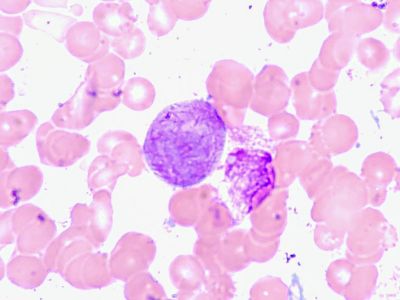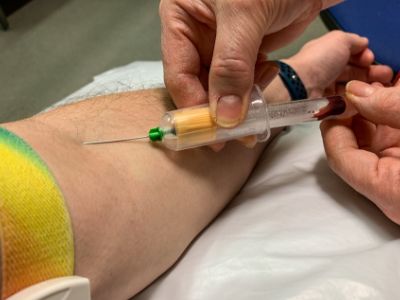Leukemia Prevention

Leukemia is a broad term for cancers of the blood cells. The type of leukemia depends on the type of blood cell that becomes cancer and whether it grows slowly or quickly. This disease occurs most often in adults older than 55, but it is also the most common cancer in children younger than 15.
Doctors classify leukemia based on its speed of progression and the type of cells involved.
- Acute leukemia: In acute leukemia, the abnormal blood cells are immature. They can’t carry out their normal functions, and they multiply rapidly, so the disease worsens quickly.
- Chronic leukemia: Chronic leukemia involves more-mature blood cells. These blood cells replicate or accumulate more slowly and can function normally for some time.
The second type of classification is by type of white blood cell affected:
- Lymphocytic leukemia: This type of leukemia affects the lymphoid cells, which form lymphoid or lymphatic tissue.
- Myelogenous leukemia: This type of leukemia affects the myeloid cells. Myeloid cells give rise to red blood cells, white blood cells, and platelet-producing cells.
The major types of leukemia are:
- Acute lymphocytic leukemia (ALL)
- Acute myelogenous leukemia (AML)
- Chronic lymphocytic leukemia (CLL)
- Chronic myelogenous leukemia (CML)
The treatment for leukemia can be complex which depends on the type of leukemia and other factors. However, some strategies and resources can help make your treatment successful.

Causes of Leukemia
In general, leukemia is thought to occur when some blood cells acquire changes in their genetic material or DNA. A cell’s DNA has the instructions that tell a cell what to do. Usually, the DNA tells the cell to grow at a set rate and to die at a set time. In leukemia, the mutations tell the blood cells to continue dividing and growing.
If this occurs, blood cell production becomes out of control. Over time, these abnormal cells can crowd out healthy blood cells in the bone marrow leading to fewer healthy red blood cells, white blood cells, and platelets that cause the signs and symptoms of leukemia.
Symptoms of Leukemia
Symptoms of leukemia may vary depending on the type. Symptoms may include:
- Excessive sweating, especially at night
- Bone pain or tenderness
- Recurrent nosebleeds
- Tiny red spots in your skin (petechiae)
- Swollen lymph nodes, enlarged liver or spleen
- Easy bleeding or bruising
- Frequent or severe infections
- Losing weight without trying
- Fever or chills
- Persistent fatigue or weakness
Risk Factors of Leukemia
Factors that may increase your risk of developing leukemia include:
- Family history of leukemia
- Smoking
- Exposure to certain chemicals
- Genetic disorders
- Previous cancer treatment

Diagnosis of Leukemia
Doctors may find leukemia in a routine blood test before symptoms begin. If this occurs or if you have symptoms, you may undergo the following diagnostic exams:
- Bone marrow test
- Blood tests
- Physical exam
Treatment and Medications for Leukemia
Leukemia treatment depends on many factors. Your doctor determines your treatment options based on your overall health. Common treatments used to fight the disease may include:
- Targeted therapy
- Chemotherapy
- Bone marrow transplant
- Radiation therapy
- Engineering immune cells to fight leukemia
- Immunotherapy



